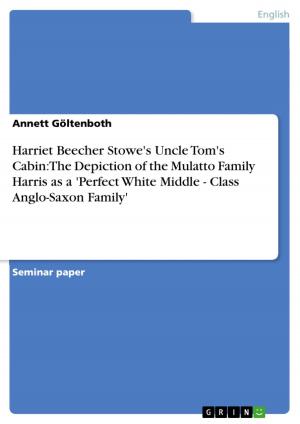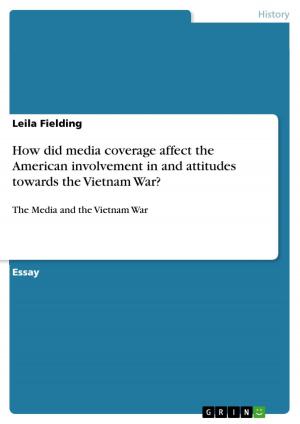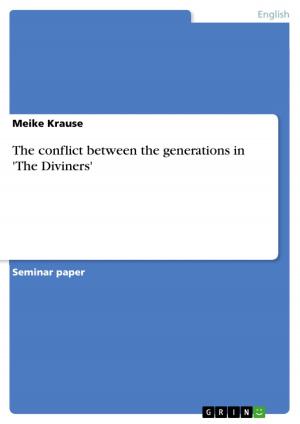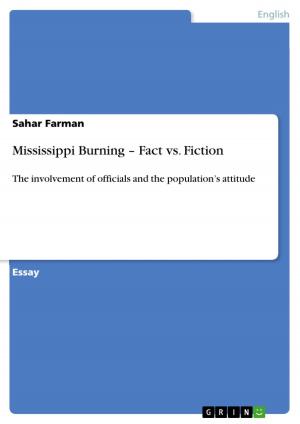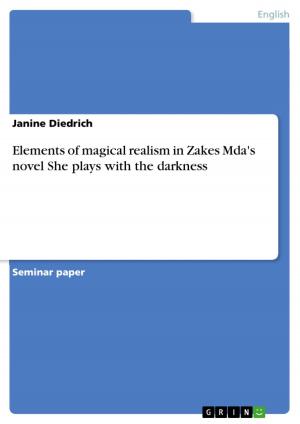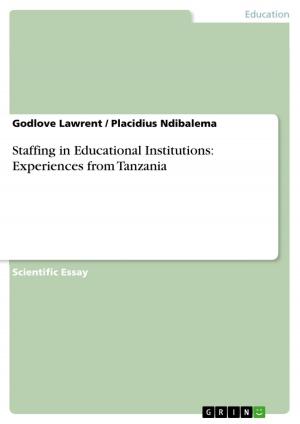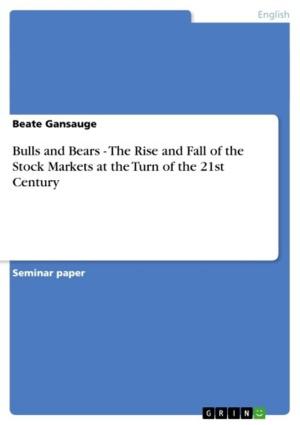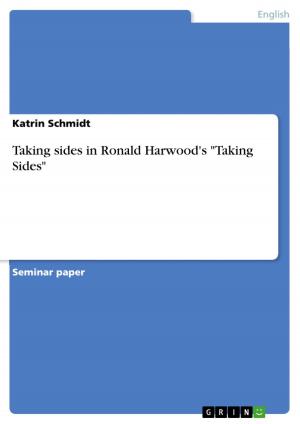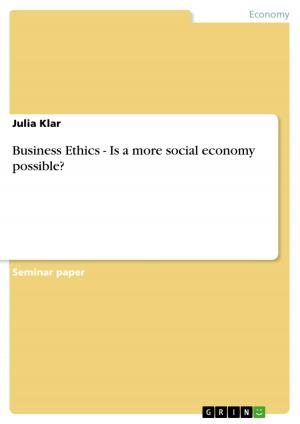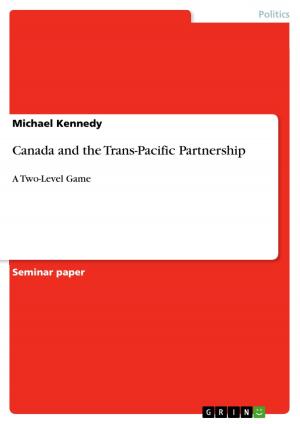Heroes of a different kind. 'The Bigger-Than-Life'-John Wayne versus the 'Man with no Name'-Clint Eastwood
John Wayne versus the 'Man with no Name' - Clint Eastwood
Nonfiction, Reference & Language, Study Aids, ESL, Foreign Languages| Author: | Felix Kornmann | ISBN: | 9783640619221 |
| Publisher: | GRIN Publishing | Publication: | May 11, 2010 |
| Imprint: | GRIN Publishing | Language: | English |
| Author: | Felix Kornmann |
| ISBN: | 9783640619221 |
| Publisher: | GRIN Publishing |
| Publication: | May 11, 2010 |
| Imprint: | GRIN Publishing |
| Language: | English |
Seminar paper from the year 2008 in the subject English Language and Literature Studies - Culture and Applied Geography, grade: 1,3, University of Rostock (Institut für Anglistik/Amerikanistik), language: English, abstract: In the following pages of this term-paper, a comparison, amongst the characters of Sheriff John T. Chance played by John Wayne and Outlaw Josey Wales personated by Clint Eastwood, will be exerted. For this endeavor, two films that constitute a remarkable landmark for those very particular actors are going to be considered - 'Rio Bravo' by Howard Marks filmed in 1959 and 'The Outlaw Josey Wales' self-directed by Clint Eastwood in 1976. Both movies embody a threshold-situation for each one of them. In Rio Bravo John Wayne, the 'bigger-than-life-cowboy-hero', became older and was no longer the lonesome stranger as opposed to his previous appearances. With the role of the Sheriff John T. Chance, Howard Hawks took Wayne out of the fifties and brought him into the sixties. That shift is illustrated as Wayne was now seen with a rifle instead of a pistol and furthermore exemplified because he saw others who were faster. In conjunction with this he now transformed into the leader of a team, and this was representative of the significant change which had taken place in western movies, with the transition from adult western to professionalism. Clint Eastwood is praised as the supernatural 'Man with No Name' to the undead, the one who wreaks vengeance to the unforgiven, whose veneer of renunciation gives away revelations of guilt and terror. Unlike in the Leone-Trilogy, his character was transformed into a man named 'Josey Wales', but he maintained all of his abilities. Wales says little, keeps his face hidden in the shadows, has an almost godlike personal invulnerability and lives by a code we have to intuit, because he would rather die than explain it aloud. He has the aptitude to wipe out six, eight, or even ten bad guys before they can fire off a single shot. He plays it extremely cool and keeps the audience believing that he has everything under control in any situation, no matter how thrilling the situation may be - a MAN. Both - Wales and Chance - can be considered heroes but what kind of heroes? How do they embody their heroism? Do they have a past, a family, and friends or do they appear from no-where? What is remarkable for each one of the characters and what is similar? These questions are an integral component of the comparison of the two hero roles and the following pages of this term-paper shall try to give some answers.
Seminar paper from the year 2008 in the subject English Language and Literature Studies - Culture and Applied Geography, grade: 1,3, University of Rostock (Institut für Anglistik/Amerikanistik), language: English, abstract: In the following pages of this term-paper, a comparison, amongst the characters of Sheriff John T. Chance played by John Wayne and Outlaw Josey Wales personated by Clint Eastwood, will be exerted. For this endeavor, two films that constitute a remarkable landmark for those very particular actors are going to be considered - 'Rio Bravo' by Howard Marks filmed in 1959 and 'The Outlaw Josey Wales' self-directed by Clint Eastwood in 1976. Both movies embody a threshold-situation for each one of them. In Rio Bravo John Wayne, the 'bigger-than-life-cowboy-hero', became older and was no longer the lonesome stranger as opposed to his previous appearances. With the role of the Sheriff John T. Chance, Howard Hawks took Wayne out of the fifties and brought him into the sixties. That shift is illustrated as Wayne was now seen with a rifle instead of a pistol and furthermore exemplified because he saw others who were faster. In conjunction with this he now transformed into the leader of a team, and this was representative of the significant change which had taken place in western movies, with the transition from adult western to professionalism. Clint Eastwood is praised as the supernatural 'Man with No Name' to the undead, the one who wreaks vengeance to the unforgiven, whose veneer of renunciation gives away revelations of guilt and terror. Unlike in the Leone-Trilogy, his character was transformed into a man named 'Josey Wales', but he maintained all of his abilities. Wales says little, keeps his face hidden in the shadows, has an almost godlike personal invulnerability and lives by a code we have to intuit, because he would rather die than explain it aloud. He has the aptitude to wipe out six, eight, or even ten bad guys before they can fire off a single shot. He plays it extremely cool and keeps the audience believing that he has everything under control in any situation, no matter how thrilling the situation may be - a MAN. Both - Wales and Chance - can be considered heroes but what kind of heroes? How do they embody their heroism? Do they have a past, a family, and friends or do they appear from no-where? What is remarkable for each one of the characters and what is similar? These questions are an integral component of the comparison of the two hero roles and the following pages of this term-paper shall try to give some answers.

